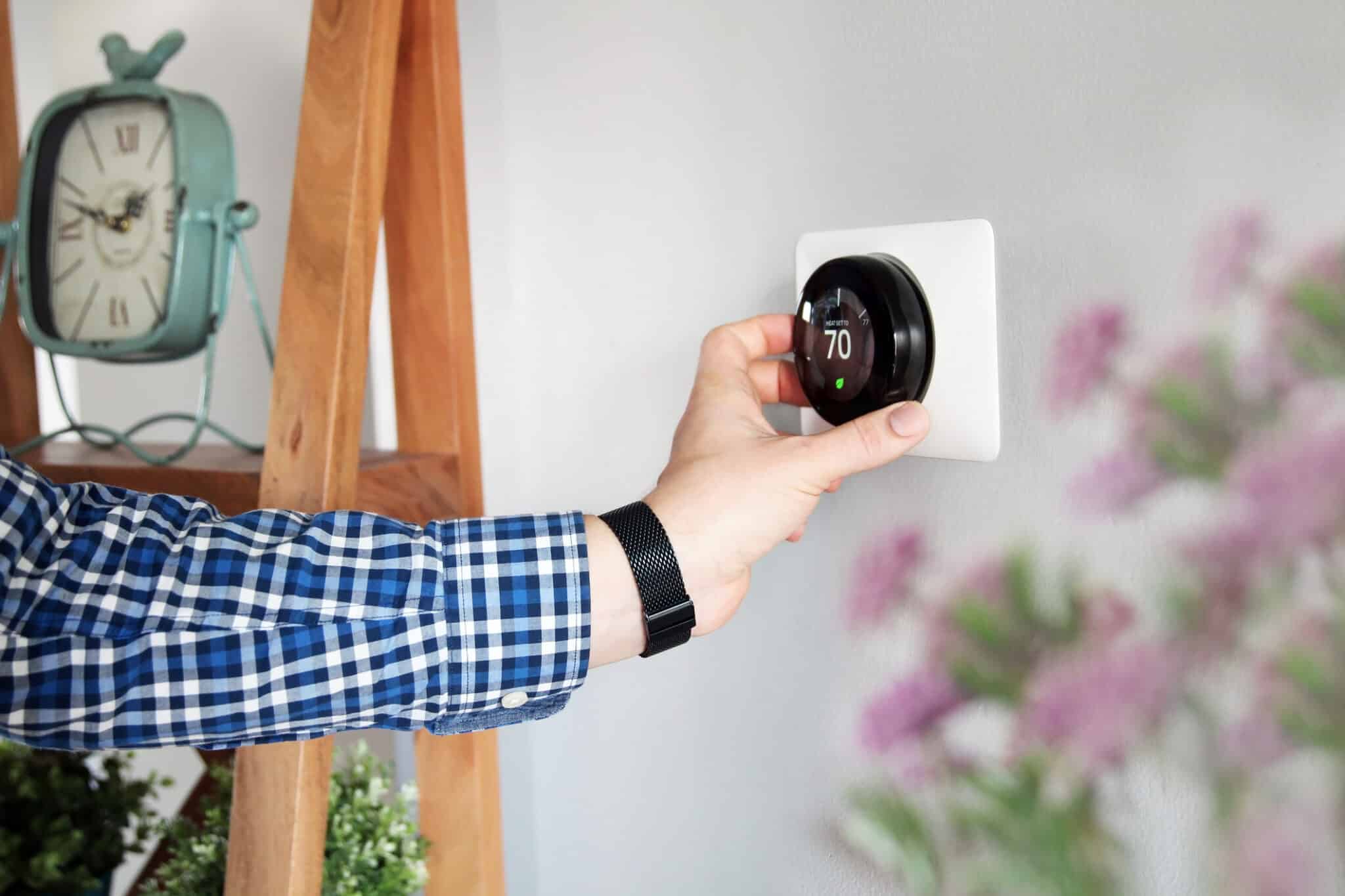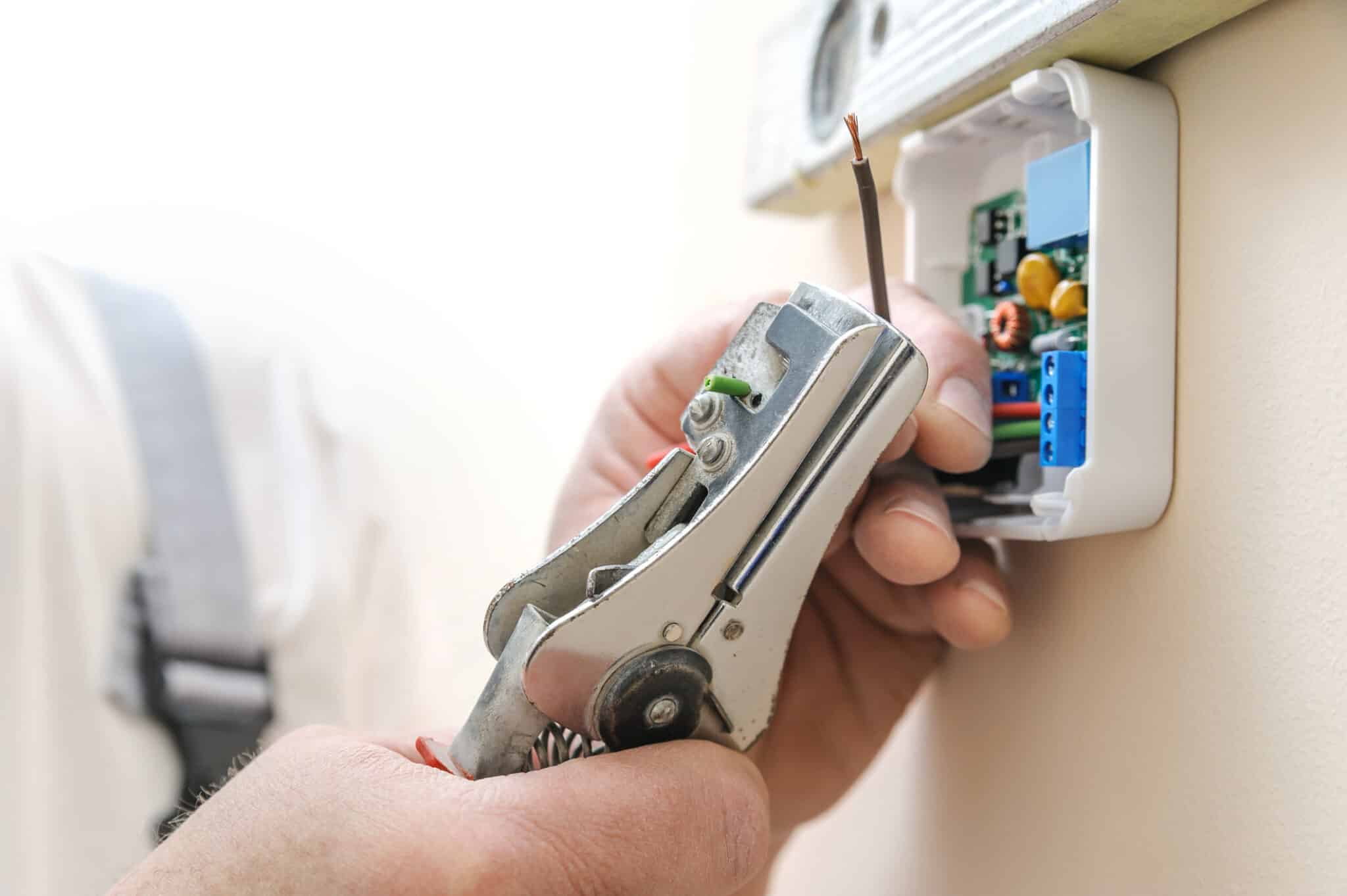A thermostat upgrade is one of the simplest ways to cut energy costs while improving home comfort. Many homeowners in Lakeside, CA don’t realize how much an outdated thermostat could be affecting their energy bills. By switching to a modern, energy-efficient model, you can gain better control over your heating and cooling system while saving money throughout the year.
With today’s advanced thermostat technology, homeowners can program their systems to adjust temperatures automatically, ensuring energy isn’t wasted when no one is home. Some smart thermostats even learn your schedule and preferences, optimizing energy use without any manual adjustments. These innovations not only reduce energy waste but also enhance the efficiency of your entire HVAC system, leading to long-term cost savings.
In Lakeside, seasonal temperature changes mean homeowners rely on their HVAC systems year-round. Whether cooling your home during hot summers or maintaining warmth on cooler winter nights, having the right thermostat can make a significant difference. Upgrading to a smart or programmable thermostat allows you to maintain comfort without overspending on energy bills.
In this article, we’ll explore the benefits of a thermostat upgrade, including energy efficiency, cost savings, and improved HVAC performance. We’ll also discuss common mistakes homeowners make and why professional installation is essential. Let’s dive into how a simple upgrade can lead to major savings this year.
How a Thermostat Upgrade Improves Energy Efficiency
A thermostat upgrade can significantly improve energy efficiency by giving homeowners better control over their HVAC systems. Unlike older manual models, modern thermostats automatically adjust temperatures based on usage patterns, preventing unnecessary energy consumption. This means your heating and cooling system works only when needed, reducing waste and lowering utility bills.
One key advantage of newer thermostats is precise temperature control. Traditional thermostats often fluctuate by several degrees, causing your HVAC system to turn on and off more frequently. Smart and programmable thermostats keep temperatures stable, reducing system strain and improving overall efficiency. According to the U.S. Department of Energy, proper use of a programmable thermostat can save homeowners up to 10% annually on heating and cooling costs.
Many ENERGY STAR-certified thermostats include features like adaptive learning, which allows them to adjust based on your daily routine. Some models use sensors to detect when people are home, automatically lowering or raising temperatures to match occupancy. Others connect to weather forecasts and make real-time adjustments to maximize efficiency.
For homeowners in Lakeside, CA, where temperatures vary throughout the year, these smart adjustments are especially beneficial. A thermostat upgrade helps prevent excessive cooling in the summer and unnecessary heating in the winter, ensuring comfort without energy waste.

Smart Thermostats vs. Programmable Thermostats: Which Is Best?
When considering a thermostat upgrade, homeowners often choose between smart thermostats and programmable thermostats. While both options improve energy efficiency, they differ in functionality and convenience. Understanding these differences can help you determine the best fit for your home in Lakeside, CA.
Programmable Thermostats: Affordable and Effective
A programmable thermostat allows users to set specific temperature schedules throughout the day. You can program different settings for weekdays and weekends, ensuring your HVAC system isn’t running when no one is home. This reduces unnecessary energy consumption and lowers utility bills.
However, these thermostats require manual input. If your schedule changes often, you may need to adjust settings frequently to maximize efficiency. Despite this, U.S. Department of Energy studies show that proper programming can save homeowners up to 10% on heating and cooling costs annually.
Smart Thermostats: Automated and Intelligent
A smart thermostat takes energy savings to the next level by using Wi-Fi connectivity and learning algorithms. These devices adjust temperatures automatically based on your habits, occupancy, and even real-time weather conditions. Some models feature geofencing, detecting when you leave home and adjusting settings accordingly.
Smart thermostats also allow remote access via smartphone apps. This means you can change your home’s temperature from anywhere, ensuring comfort without wasting energy. Some models integrate with voice assistants like Alexa or Google Assistant, making climate control even more convenient.
Which One Should You Choose?
If you prefer a budget-friendly option with set scheduling, a programmable thermostat is a solid choice. However, if you want automated adjustments, remote control, and maximum efficiency, a smart thermostat is the better long-term investment.
Regardless of your choice, upgrading your thermostat can significantly improve comfort and reduce HVAC costs. In the next section, we’ll explore how a thermostat upgrade directly impacts your energy bills.
How a Thermostat Upgrade Reduces Energy Bills
A thermostat upgrade is one of the most effective ways to lower monthly energy costs. By improving temperature control and reducing waste, modern thermostats help homeowners in Lakeside, CA keep their homes comfortable without overspending on utilities.
More Precise Temperature Control
Older thermostats often have wide temperature fluctuations, causing HVAC systems to cycle on and off frequently. This increases energy consumption and puts extra strain on heating and cooling equipment. Upgraded thermostats maintain a more consistent indoor climate, preventing unnecessary energy use and reducing wear on the system.
Automated Adjustments for Maximum Efficiency
Smart thermostats go beyond basic programming by using automation to optimize energy use. Many models adjust temperatures based on occupancy, time of day, and even outdoor weather conditions. This means your HVAC system only runs when needed, helping to cut down on wasted energy.
According to the U.S. Department of Energy, homeowners can save around 10% annually on heating and cooling costs by properly using a programmable or smart thermostat. Some studies suggest that smart thermostats can save even more, with energy reductions ranging from 15% to 20% depending on usage.
Lower Utility Bills Year-Round
For homeowners in Lakeside, seasonal temperature shifts require frequent HVAC use. A thermostat upgrade ensures your system operates efficiently whether you’re cooling your home during the summer or keeping it warm in the winter. Over time, these small adjustments add up to significant savings on utility bills.
By upgrading to a modern thermostat, homeowners can reduce energy waste, extend the lifespan of their HVAC systems, and enjoy lower bills. In the next section, we’ll discuss additional HVAC benefits of upgrading your thermostat.
Additional HVAC Benefits of a Thermostat Upgrade
A thermostat upgrade doesn’t just lower energy bills, it also improves the overall performance and lifespan of your HVAC system. By reducing unnecessary heating and cooling cycles, modern thermostats help your system operate more efficiently, leading to fewer breakdowns and lower maintenance costs.
Reduced Wear and Tear on HVAC Components
Frequent cycling puts stress on HVAC components, causing them to wear out faster. Older thermostats often lead to inefficient temperature control, making your system turn on and off more than necessary. With an upgraded thermostat, your HVAC system operates more smoothly, reducing strain on parts like compressors, fans, and heat exchangers.
Better Temperature Consistency
Traditional thermostats often struggle to maintain a steady temperature, leading to uncomfortable hot and cold spots. Smart and programmable thermostats regulate indoor temperatures more accurately, creating a more consistent and comfortable environment. This prevents your system from overworking to compensate for temperature fluctuations.
Optimized System Performance
Many modern thermostats provide data on energy use and system performance, helping homeowners make informed decisions. Some models offer maintenance reminders, alerting you when it’s time to change filters or schedule an HVAC tune-up. This proactive approach helps prevent unexpected breakdowns and keeps your system running efficiently.
Compatibility with High-Efficiency HVAC Systems
If you’ve recently upgraded to a high-efficiency HVAC unit, pairing it with an advanced thermostat maximizes energy savings. Smart thermostats can communicate with modern systems, adjusting performance to achieve optimal efficiency. This combination leads to better overall comfort and lower long-term operating costs.
Upgrading your thermostat is a simple yet effective way to enhance HVAC performance and prolong system lifespan. In the next section, we’ll explore the key features to look for when choosing a thermostat upgrade.
Features to Look for in a Thermostat Upgrade
Choosing the right thermostat upgrade can make a big difference in energy efficiency and home comfort. With so many models available, it’s important to understand the key features that provide the best performance for your HVAC system.
One of the most valuable features is Wi-Fi connectivity, which allows homeowners to control their thermostat remotely using a smartphone app. This is especially useful for adjusting temperatures while away from home, ensuring energy isn’t wasted when the house is empty. Some thermostats even provide energy reports, helping you track usage and identify ways to improve efficiency.
Learning capabilities are another key feature of modern thermostats. Smart models analyze household routines and automatically adjust temperature settings to optimize comfort and savings. Over time, they create schedules based on when people are home, reducing the need for manual adjustments.
Some thermostats include geofencing technology, which detects when occupants leave or return home. This feature helps reduce unnecessary heating or cooling by adjusting settings based on your location. Additionally, compatibility with voice assistants like Alexa, Google Assistant, or Siri makes it easy to change settings hands-free.
For homeowners in Lakeside, CA, where seasonal temperature changes affect HVAC usage, a thermostat with humidity control can provide extra comfort. Maintaining proper indoor humidity levels prevents excessive cooling in summer and improves heating efficiency in winter.
Understanding these features can help you choose a thermostat that maximizes savings and enhances home comfort. In the next section, we’ll discuss common mistakes homeowners make when upgrading their thermostats.
Common Mistakes Homeowners Make with Thermostat Upgrades
A thermostat upgrade can improve energy efficiency, but homeowners often make mistakes that reduce its effectiveness. Understanding these common pitfalls can help you get the most out of your new thermostat.
One of the biggest mistakes is improper installation. Installing a thermostat incorrectly can lead to inaccurate temperature readings, causing the HVAC system to run inefficiently. Placement also matters, a thermostat installed near windows, direct sunlight, or vents may not provide an accurate temperature reading. Professional installation ensures the thermostat is correctly positioned and properly connected to your HVAC system.
Another common issue is failing to program the thermostat properly. Many homeowners install a programmable or smart thermostat but never set up schedules or automation features. Without proper programming, energy savings are minimal. Taking the time to customize temperature settings based on daily routines can maximize efficiency and reduce energy waste.
Some homeowners also override automatic settings too often. Constantly adjusting the thermostat can make the system work harder than necessary, increasing energy costs. Smart thermostats are designed to learn temperature preferences over time, so frequent manual adjustments can interfere with their efficiency.
Ignoring software updates and maintenance reminders is another mistake. Many smart thermostats receive software updates that improve performance and enhance energy-saving features. Additionally, some models provide maintenance alerts, such as reminders to replace air filters, which help keep HVAC systems running smoothly.
Avoiding these mistakes ensures your thermostat upgrade provides maximum comfort and energy savings. In the next section, we’ll explore how seasonal changes in Lakeside, CA affect thermostat use and efficiency.
How Seasonal Changes in Lakeside, CA Affect Thermostat Use
A thermostat upgrade is especially beneficial in places like Lakeside, CA, where seasonal temperature shifts impact heating and cooling needs. Adjusting thermostat settings based on the time of year can improve comfort and maximize energy savings.
During the summer months, temperatures in Lakeside can reach the high 80s and 90s. A programmable or smart thermostat helps reduce cooling costs by setting higher temperatures when the house is empty and lowering them before occupants return. The U.S. Department of Energy recommends setting the thermostat to 78°F when at home and 85°F when away to optimize energy efficiency.
In the winter, while Lakeside experiences milder temperatures compared to other regions, nighttime lows can still dip into the 40s. A thermostat that automatically adjusts to these changes prevents overuse of the heating system. The recommended setting is 68°F when at home and lower when sleeping or away. Smart thermostats with geofencing or learning capabilities make these adjustments seamless.
Another key factor in Lakeside’s climate is humidity. High humidity levels in summer can make a home feel warmer than it actually is, leading to excessive AC use. Many smart thermostats integrate with humidity sensors to help regulate indoor moisture levels, improving comfort without overcooling.
A thermostat upgrade ensures efficient temperature management throughout the year, reducing energy waste while maintaining a comfortable home environment. In the next section, we’ll discuss why professional installation is essential for getting the most out of your new thermostat.
Why Professional Installation Matters for a Thermostat Upgrade
A thermostat upgrade offers significant energy savings, but improper installation can reduce its effectiveness. Many homeowners attempt to install their thermostats themselves, only to encounter wiring issues, connectivity problems, or inaccurate temperature readings. Professional installation ensures the thermostat functions correctly and integrates seamlessly with the HVAC system.
One of the biggest benefits of professional installation is proper wiring and compatibility checks. HVAC systems vary, and not all thermostats work with every system. A trained technician ensures the thermostat is correctly wired and compatible with the heating and cooling unit. Incorrect wiring can lead to short cycling, system malfunctions, or even permanent damage.
Placement is another important factor. Thermostats should be installed away from drafts, direct sunlight, and heat-generating appliances. Poor placement can cause the thermostat to misread the room temperature, leading to unnecessary heating or cooling. HVAC professionals know how to position the thermostat for the most accurate temperature control.
Professional installers also calibrate the thermostat for optimal performance. This step ensures precise temperature readings, prevents excessive system cycling, and maximizes energy efficiency. Additionally, they can connect Wi-Fi-enabled thermostats to smart home systems and walk homeowners through app setup and usage.
A thermostat upgrade is an investment in home comfort and energy savings, but proper installation is key to unlocking its full benefits. In the next section, we’ll answer some common questions about thermostat upgrades to help homeowners make informed decisions.

FAQ: Thermostat Upgrade
1. How much can a thermostat upgrade save on energy bills?
A thermostat upgrade can reduce heating and cooling costs by 10% to 20% annually, depending on usage. Smart thermostats optimize energy use by adjusting temperatures automatically, preventing waste.
2. Do smart thermostats work with all HVAC systems?
Not all smart thermostats are compatible with every HVAC system. Some models require a C-wire for power, while others may not support older heating and cooling units. A professional HVAC technician can help determine the best option for your system.
3. How long does professional installation take?
Most thermostat installations take 30 to 60 minutes, depending on the complexity of the HVAC system and wiring requirements. Smart thermostat setup, including Wi-Fi connection and app configuration, may take slightly longer.
4. Are there rebates or incentives for upgrading a thermostat?
Many utility companies and government programs offer rebates for installing ENERGY STAR-certified thermostats. Homeowners in Lakeside, CA should check with local energy providers to see if incentives are available.
5. Can I control my thermostat remotely?
Yes, most Wi-Fi-enabled thermostats allow remote control through smartphone apps. This feature lets you adjust settings from anywhere, ensuring energy isn’t wasted when no one is home.



















